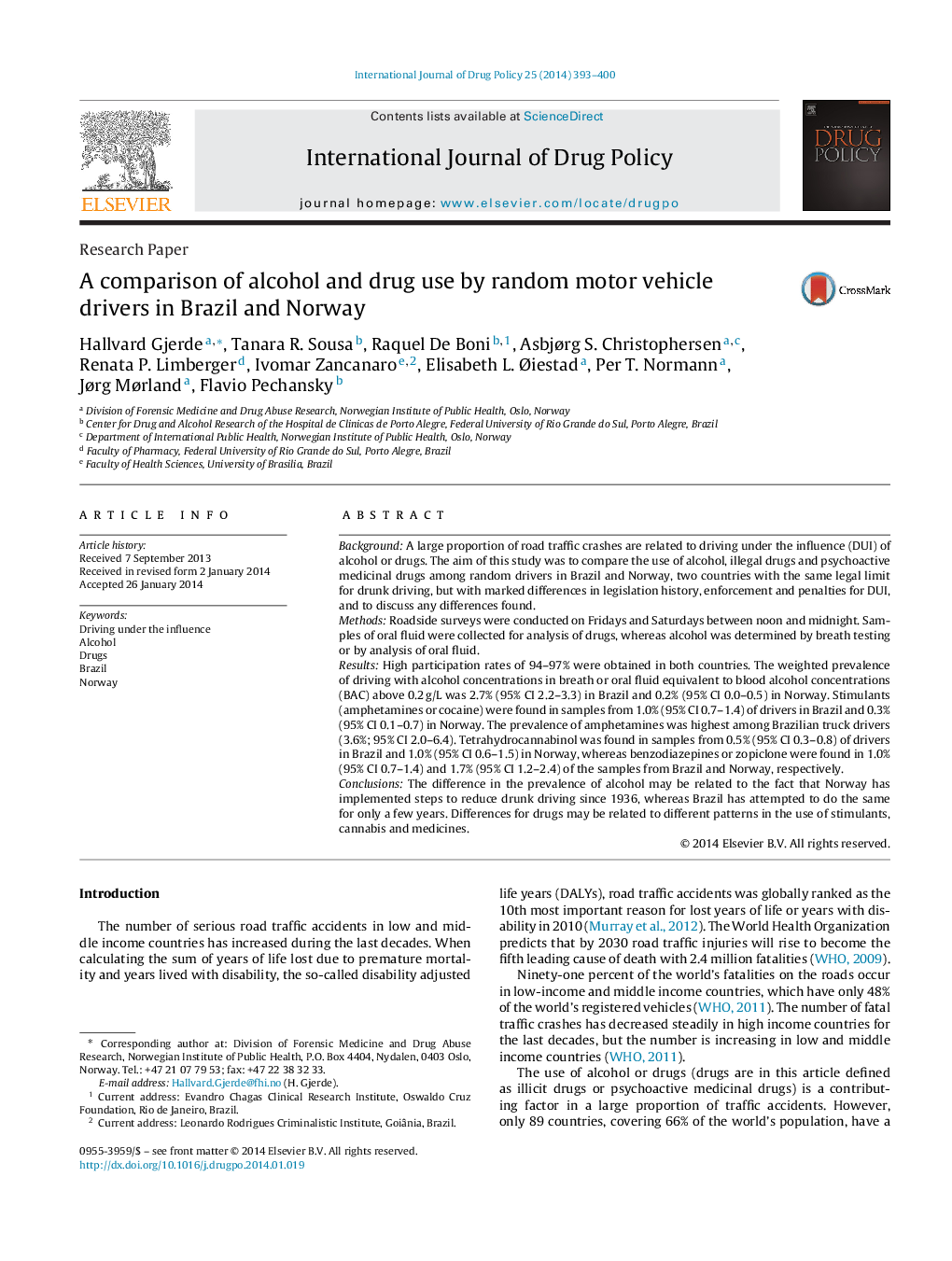| کد مقاله | کد نشریه | سال انتشار | مقاله انگلیسی | نسخه تمام متن |
|---|---|---|---|---|
| 1075108 | 1486295 | 2014 | 8 صفحه PDF | دانلود رایگان |
BackgroundA large proportion of road traffic crashes are related to driving under the influence (DUI) of alcohol or drugs. The aim of this study was to compare the use of alcohol, illegal drugs and psychoactive medicinal drugs among random drivers in Brazil and Norway, two countries with the same legal limit for drunk driving, but with marked differences in legislation history, enforcement and penalties for DUI, and to discuss any differences found.MethodsRoadside surveys were conducted on Fridays and Saturdays between noon and midnight. Samples of oral fluid were collected for analysis of drugs, whereas alcohol was determined by breath testing or by analysis of oral fluid.ResultsHigh participation rates of 94–97% were obtained in both countries. The weighted prevalence of driving with alcohol concentrations in breath or oral fluid equivalent to blood alcohol concentrations (BAC) above 0.2 g/L was 2.7% (95% CI 2.2–3.3) in Brazil and 0.2% (95% CI 0.0–0.5) in Norway. Stimulants (amphetamines or cocaine) were found in samples from 1.0% (95% CI 0.7–1.4) of drivers in Brazil and 0.3% (95% CI 0.1–0.7) in Norway. The prevalence of amphetamines was highest among Brazilian truck drivers (3.6%; 95% CI 2.0–6.4). Tetrahydrocannabinol was found in samples from 0.5% (95% CI 0.3–0.8) of drivers in Brazil and 1.0% (95% CI 0.6–1.5) in Norway, whereas benzodiazepines or zopiclone were found in 1.0% (95% CI 0.7–1.4) and 1.7% (95% CI 1.2–2.4) of the samples from Brazil and Norway, respectively.ConclusionsThe difference in the prevalence of alcohol may be related to the fact that Norway has implemented steps to reduce drunk driving since 1936, whereas Brazil has attempted to do the same for only a few years. Differences for drugs may be related to different patterns in the use of stimulants, cannabis and medicines.
Journal: International Journal of Drug Policy - Volume 25, Issue 3, May 2014, Pages 393–400
